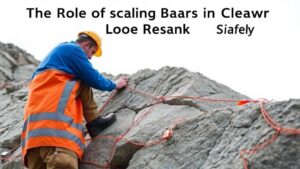How to Sample and Process Float Rock for Hard Rock Mineral Indicators
How to Sample and Process Float Rock for Hard Rock Mineral Indicators
Sampling and processing float rock is an essential technique in mineral exploration, particularly when identifying hard rock mineral indicators. Float rock refers to pieces of rock that are found away from their original source due to erosion and transport by wind, water, or ice. Understanding how to effectively sample and analyze float rock can provide crucial insights into the underlying geology and potential mineral deposits.
Importance of Float Rock Sampling
Sampling float rock is vital in the preliminary stages of mineral exploration for several reasons:
- It helps in identifying mineralized trends and potential ore sources.
- Float material can indicate the type of rock and minerals present in nearby outcrops.
- It aids in the reconnaissance phase, allowing for a focused approach to more detailed exploration.
For example, a study conducted in the Yukon Territory showed that float samples containing concentrations of gold-bearing quartz indicated the proximity of substantial gold deposits in bedrock.
Tools and Equipment Needed
Before embarking on a float rock sampling expedition, it is essential to gather the appropriate tools and equipment:
- Map and compass or GPS device for navigation
- Geological hammer for breaking or chiseling rock samples
- Sturdy sample bags or containers for collection
- Field notebook for documenting locations and observations
- Personal protective equipment (PPE) such as gloves and safety glasses
Sampling Techniques
Effective sampling involves various techniques to ensure that samples are representative and valuable for further analysis. following methods are commonly used:
- Systematic Sampling: This involves selecting samples at regular intervals across an area. For example, every 10 meters along a transect line may yield consistent data across a given landscape.
- Judgmental Sampling: Here, samples are collected based on visual assessment and geologic knowledge. This method is beneficial for targeting visible mineralization, such as high-grade copper or gold.
Regardless of the method, it is crucial to gather samples from multiple locations and environments to avoid bias.
Sample Processing Techniques
Once float rock samples are collected, they must be processed to extract valuable mineral information. Key steps in the processing include:
- Crushing and Grinding: Samples are crushed and ground to liberate minerals. Tools such as jaw crushers and ball mills are commonly used in the laboratory setting.
- Sieving: This separates particles by size. Investigating different size fractions can help identify mineral concentrations.
- Concentration Techniques: Methods such as gravity separation, flotation, or magnetic separation may be employed to concentrate valuable minerals from the samples.
Geochemical Analysis
After concentration, the next stage involves geochemical analysis to quantify the mineral content. Techniques include:
- Fire Assay: A classical technique used for precious metals, particularly gold. This method involves melting the sample with a flux to separate precious metals from impurities.
- X-Ray Fluorescence (XRF): A non-destructive analytical method that provides a rapid assessment of elemental composition.
For example, using XRF on a float rock sample in Nevada revealed significant lead and zinc concentrations, guiding further exploration for skarn-type mineral deposits.
Interpreting Results
The analysis results should be interpreted in the context of the surrounding geology. Float samples can provide evidence of nearby mineralization but do not always indicate economic viability. Correlating float rock findings with geological maps and data from nearby drilling results will strengthen conclusions.
Conclusion
Sampling and processing float rock for hard rock mineral indicators is a fundamental aspect of mineral exploration. By utilizing systematic and judgmental sampling techniques, employing robust processing and analysis methods, and correlating geological data, exploration teams can effectively identify potential mineral deposits. As exploration technology continues to evolve, these methods will play a pivotal role in unlocking the earths mineral resources.
Actionable Takeaways
For those interested in mineral exploration:
- Gather a comprehensive tool kit before starting sampling.
- Employ diverse sampling techniques to garner representative data.
- Stay informed on the latest geochemical analytical techniques.
- Always contextualize results within the broader geological framework.
By following these guidelines, exploration efforts can be both efficient and successful in identifying valuable mineral resources.


